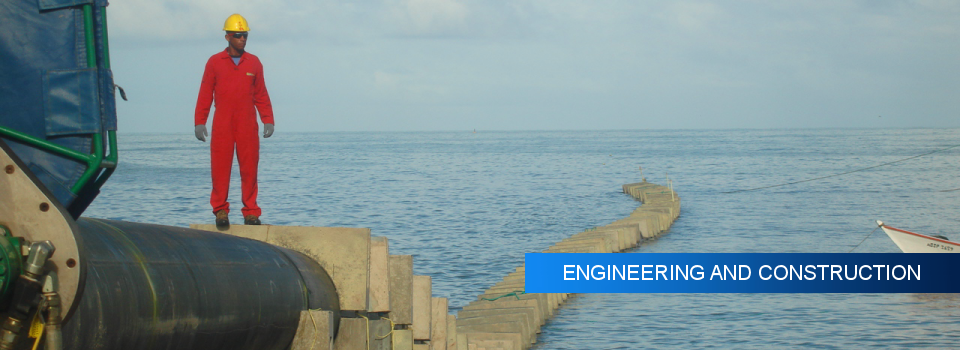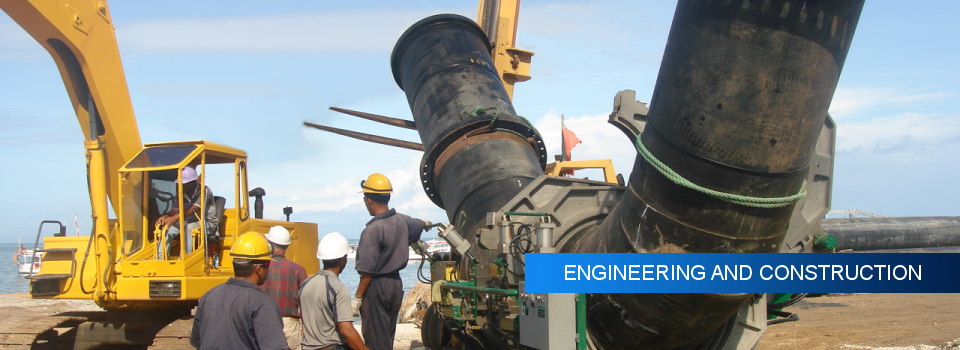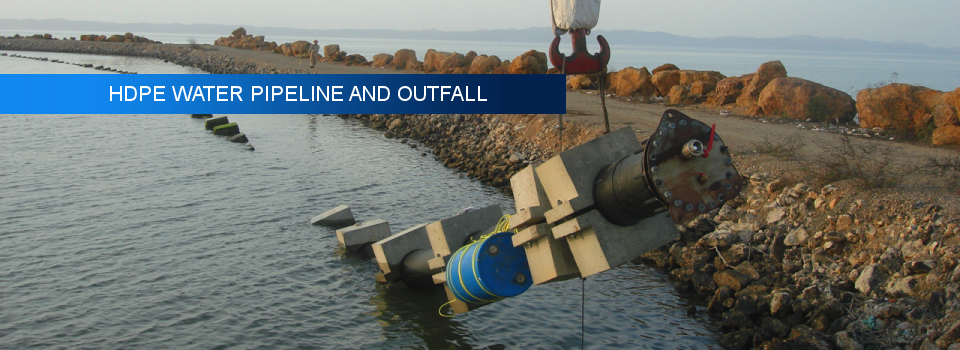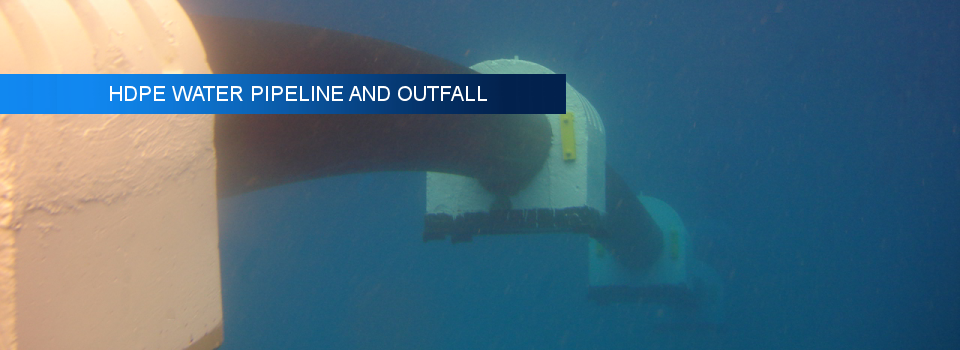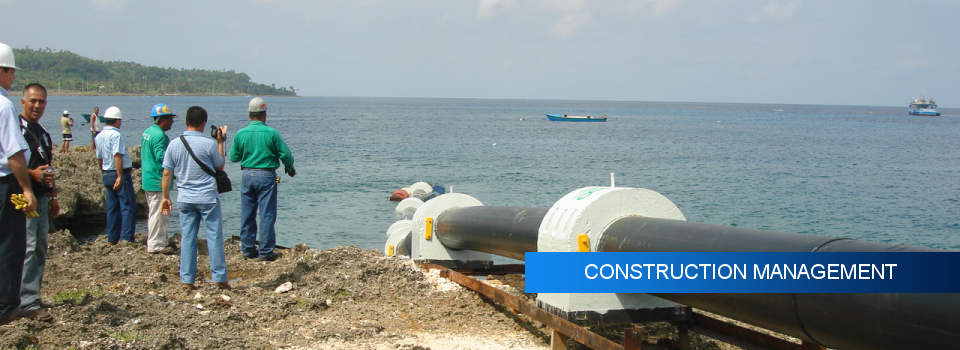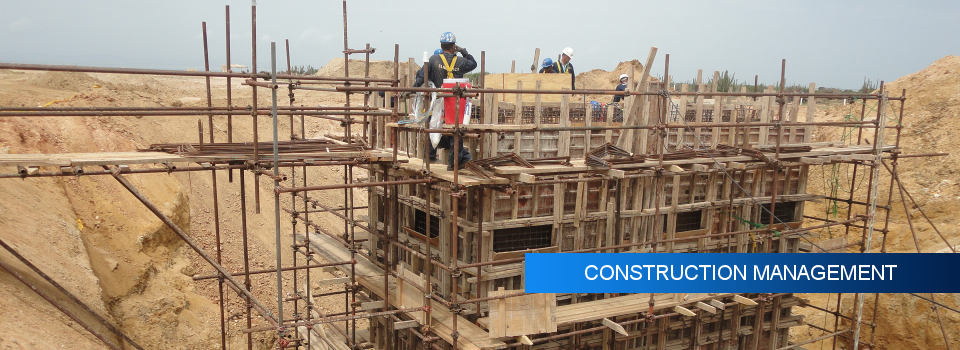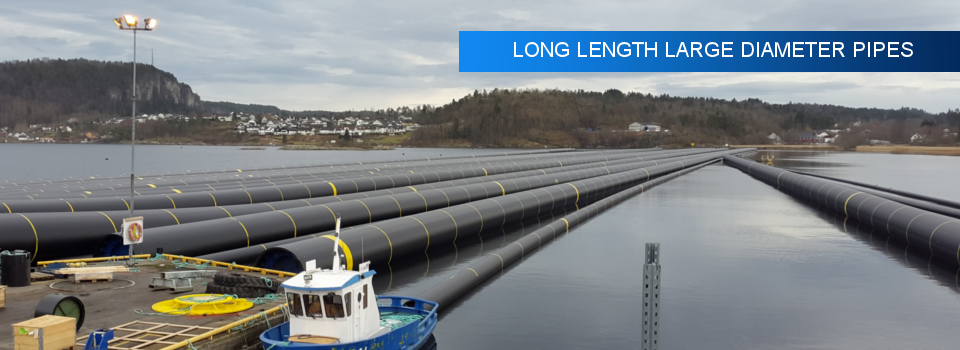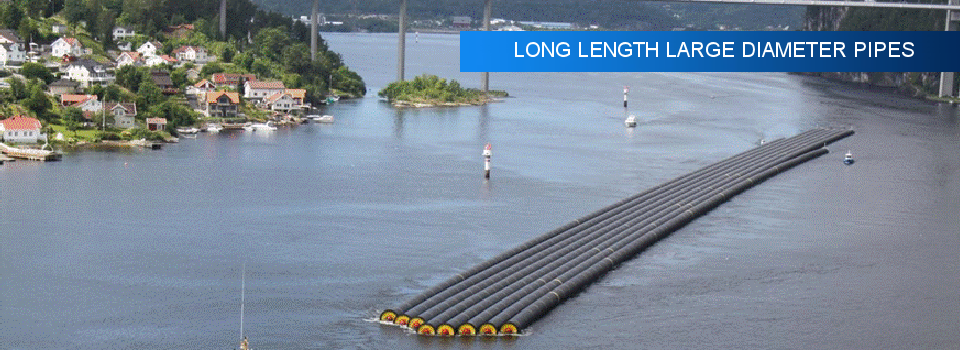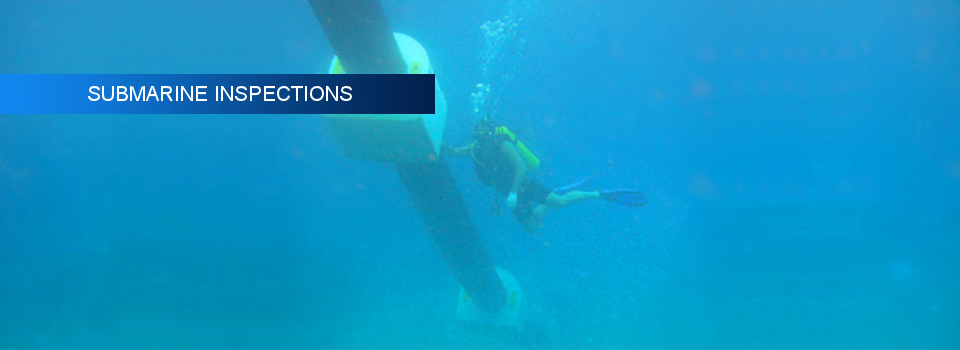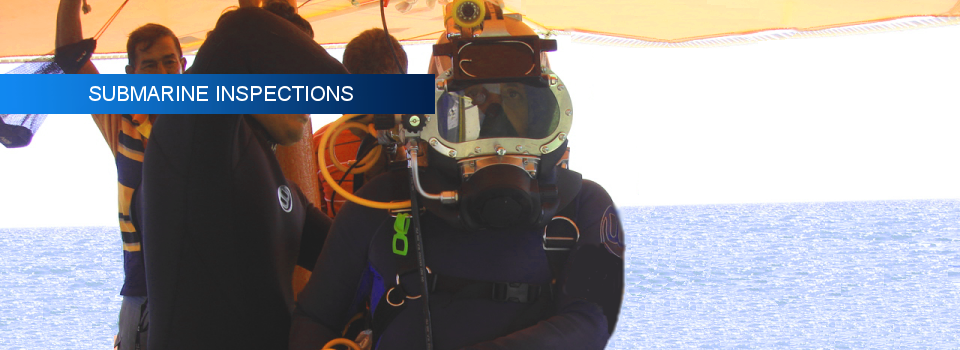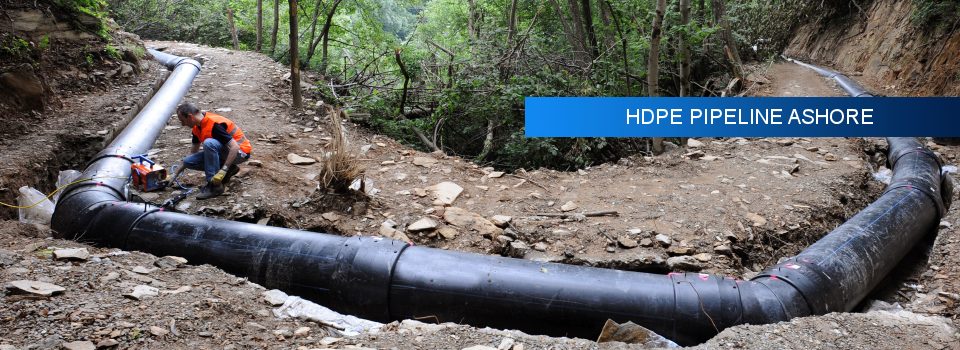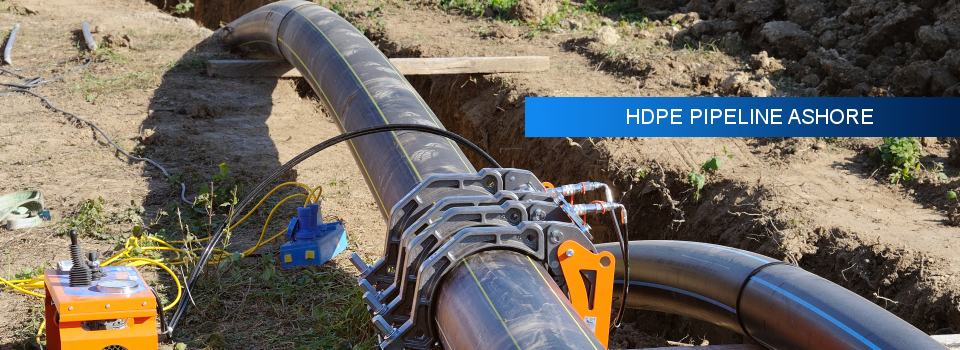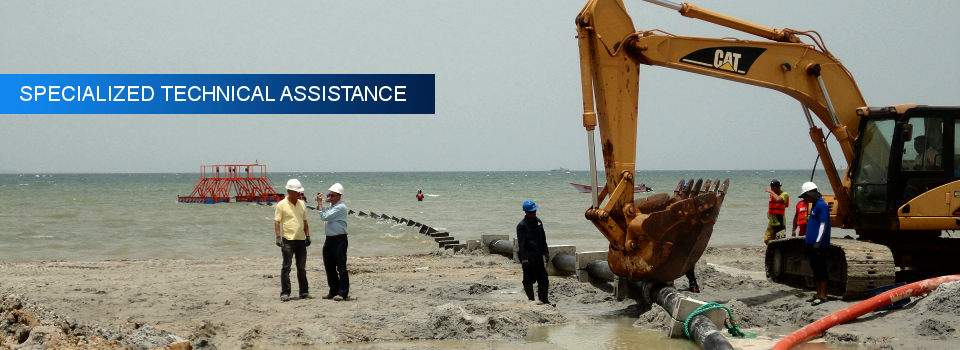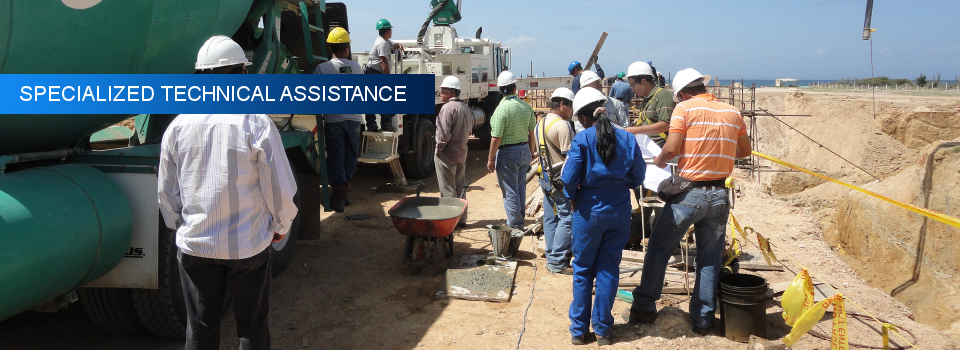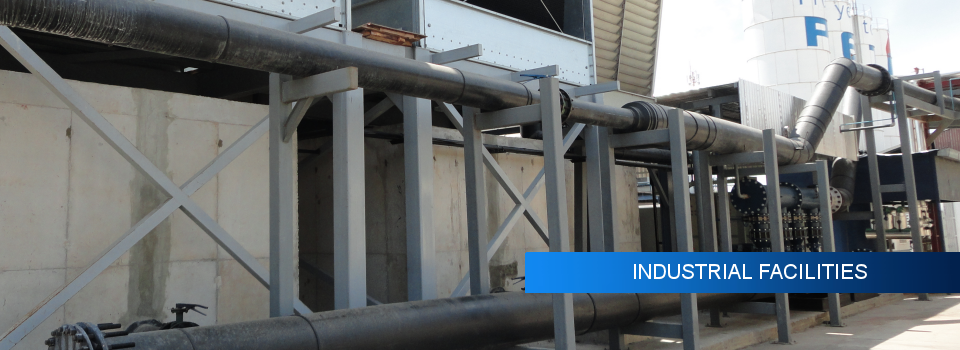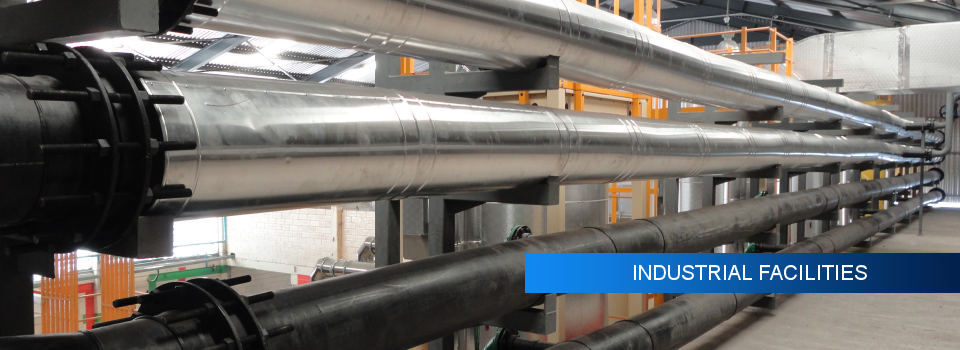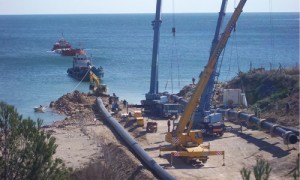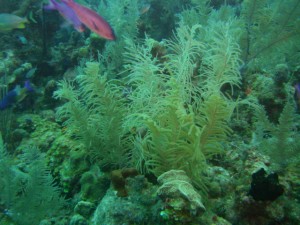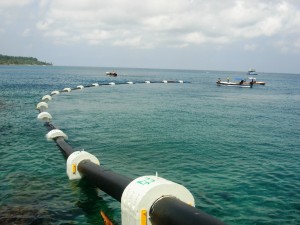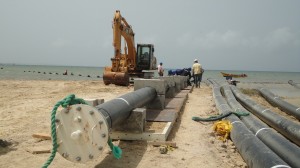 Technological evolution:
Technological evolution:
In the technological evolution of underwater engineering facilities pipe a common factor seen, get materials that provide greater benefits in maintaining systems, with lower investment the longest possible service life is reached. Today, around the world, when subsea pipelines it is, it is intended as a first choice in High Density Polyethylene (HDPE) as a material capable of providing a long life of the systems with the lowest initial investment and low costs maintenance. (See article: exploiting-the-benefits-of-polyethylene-de-high-density-pead-en-projects-of-pipe-submarine).
A new paradigm:
The installation of subsea pipelines HDPE introduce a new paradigm in the construction processes. It has been the use of large and heavy machinery, large vessels and barges tiralíneas required for steel pipe fittings, which could only be provided by construction companies with large investments in equipment; a new concept that stands as an indispensable capital knowledge and experience in building methodologies, where boats and equipment used are smaller in size and are optimized according to the resources found in the work area. This new paradigm has been implemented for many years by developed countries on five continents. Regarding these techniques, we recommend reviewing technical manuals companies: PIPELIFE. (Manual-Technical-for-facilities-submarinasde-pipes-de-polyethylene-Pipelife-Norge-AS) and the Marine Pipeline Installations KWH (http://www.kwhpipe.ca/English/Downloads), among others, as a well comprehensive guide to the art to install subsea pipelines HDPE.
Fundamental changes in the installation technique:
La técnica de instalación del PEAD en tubería submarinas propone aspectos relevantes que cambia cualquier otra técnica de instalaciones de tuberías, por ejemplo las usadas para las tuberías de acero. Haciendo énfasis en cuatro aspectos notables, tenemos que:
1. The HDPE pipe is a flexible and with lower density than water materials:
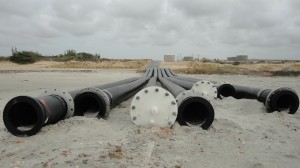
Long pipeline HDPE
This property of polyethylene makes the pipe and anchors should function as a fully assembled solidarity system, which prevents the movement of the anchors on the pipeline, designed so that each of its components (pipe + anchors + rubber + hardware) can over the last 60 years. This basically requires several things: a) Improve the design and characteristics of concrete commonly used as anchors, with water-repellent properties and recommended 350 kg / cm2 hardness; b) protect the pipe or rose contact with materials such as concrete, rocks, steel, guayas, chains or other element that could damage by wear or cutting effect. To this aim requires placing neoprene rubber buffer between the concrete and the pipe in order to tighten the concrete against the pipe without damaging the pipe these; c) To use hardware and accessories of corrosion resistant materials, usually steel hot dip galvanized or stainless FSPs for projects most important steel.
2. It is advantageous to install the pipeline in several long runs with flanged connections:
A subsea pipeline to reach distances of several kilometers, must be designed to be installed in partial long stretches, commonly from 300 m to 600 m in length, depending on the bathymetric characteristics, environmental conditions workplace and the resources available to the contractor for installation.
The need to work settled several long stretches lies in two aspects: the first inherent to the installation, as it manages to make a project with controls highest quality, preparing each section ground (welding, hydrostatic testing, placing anchors rubber buffer, retrofitting, etc.) for subsequent maritime transport and location on the bed in the shaft sinking.
The second aspect has to do with the ability to repair major damage easily, although it should be noted the importance of designing an aqueduct in PEAD eliminating any possibility of contact elements that may danger to the pipeline, as rocks, boat anchors or shock, fishing nets, and the effect of currents and waves themselves; no possibility is ruled out, although unlikely, that if increased to pipe damage occurs, it can make a repair easily bail out partially or totally damaged to be repaired with the restoration of a section of pipe previously prepared by technical section termofusión on the surface or moving to land if sea conditions warrant. It should be noted that minor damage caused to the pipeline can be solved with mechanical accessories designed for this purpose.
3. Placing anchor damper system to compensate for the internal pressure of the pipe when it is used as water systems, ie transport of pressurized water:
There is a particular requirement in submarines aqueducts built in HDPE (unlike subsea pipelines intended Emisarios or Tomas), consisting of the need for the placement of elements for damping the positive internal pressure it causes an increase in the diameter of the pipeline. which it must be offset by damping washers at the level of the fastening bolts of concrete and thick rubber tube to separate anchors.
This is to avoid overexertion causing damage to the pipe or concrete anchors. Importantly, the pipeline will have a variation in diameter whenever pressurize or depressurize the system, for which it is required that the anchors are installed sufficiently supportive to the pipeline, without allowing displacement between these during depressurization, and also the effort of the pipe against concrete anchors, during pressurization of the system is compensated.
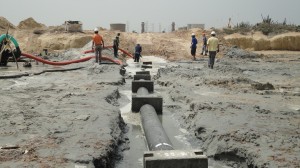 4.- preferably Burying the pipe along its length in water depths less than 10 m:
4.- preferably Burying the pipe along its length in water depths less than 10 m:
The burial of HDPE pipe is highly recommended to avoid damage from the different factors mentioned above. While studies of current and waves are decisive, most structural designs recommend burying the pipe completely until you reach a length whose water depth is equal to or less than 10 m, at shallow depths where the greatest forces product produced of waves and currents of catastrophic events seas types of cams.
The burial of the pipeline should be given special consideration as far as environmental impact is concerned, there are two main techniques: the pre-settled: which is to open a trench along the axis of collapse of the pipe, before the collapse of the same, except that the trench should be opened for a sufficient width to compensate sedimentation before the collapse of the pipe and to facilitate its positioning within the trench. This technique provides the advantage of dredging equipment to use higher performance, with the disadvantage of producing an environmental impact on the seabed of major proportions.
The second technique is the post-trenching: which is to bury the pipeline once it has been sunk and positioned on the seabed. By using equipment pumps under suction and jetting bed material is removed just below the pipe, so that it down with the weight itself that provide concrete anchors. This technique offers the advantage of providing minimal negative impact to the environment, since the bed is afflicted with a width significantly less than the first technique trench. However there are special conditions where it is not possible to apply this second technique, as in the case of rivers with permanent flow of high speeds.
Commitment of a country in technological advancement:
As part of the previously developed areas, it is important the active participation of different entities that play a decisive role in the technological development of our country, Venezuela, namely:
Government: since today represents the largest contractor of underwater works, through ministries, water and the oil industry, being necessary to stay ahead of subject knowledge in order to improve their selection processes and contracting.
Designers engineering companies: these being the technical specifications imposed to govern the implementation of projects, it is important that they are up to date knowledge in construction methods of submarine pipelines.
Underwater construction companies: for they are completing the process involved the investment of a project aimed at improving services to the nation. Therefore they play a crucial role in the successful implementation and commissioning of water systems.
All these actors should create synergy between them to ensure the success of the installation of a subsea pipeline project in high density polyethylene (HDPE).
By: Ing. Sergio Elena
www.elinsubca.com
Caracas, November, 12 – 2012

